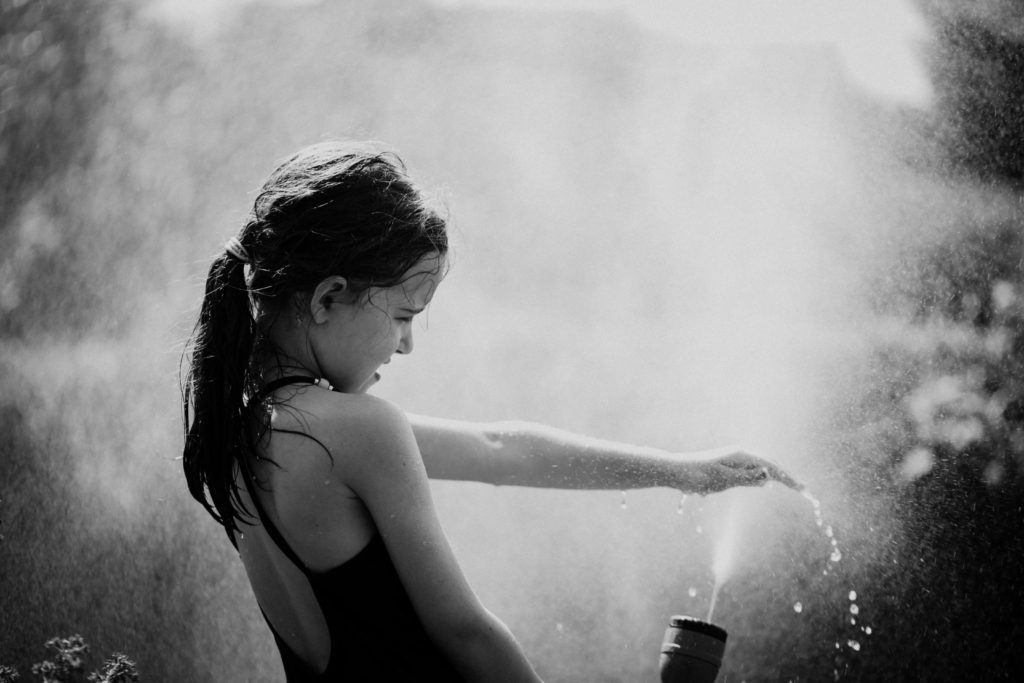All fields are required
Posted in Water on August 21, 2018

On hot summer day, it may be tempting to drink some cool water from the garden hose or sprinklers. As parents, there are many experience from our childhood that we would love for our children to experience. A few of those things may seem like a rite of passage that we feel every child must do. However, the many advances of science and technology have deemed several practices from our childhood as harmful or not safe. One of my childhood memories is drinking from the garden hose outside the house. When I look back on it, it was an easy to access water source that all of us kids could rely on for those long, hot summer days playing outside. Let’s be real. We all have done these things. But is it actually safe to drink water from a garden hose?
I regret to inform you that, it isn’t.
DO NOT DRINK WATER FROM THE HOSE
Unlike plumbing inside the home, garden hoses are not designed or manufactured to deliver safe drinking water. Usually, the water from your hose is the exact same water that is found inside your home. The major difference is the way the water is carried. The pipes and fittings in the home are designed to avoid contamination of the water because the primary purpose is to use it as a safe drinking source. Garden hoses are not regulated by the Safe Drinking Water Act (SDWA), which monitors the nation’s public drinking water supply. Water coming from a common garden hose is chock full of toxic materials that could be harmful to the human body, such as:
Antimony and bromine are flame retardant chemicals. Garden hoses use a common plastic called polyvinyl chloride, which may release toxic vinyl chloride. BPA, lead, and phthalates are used to stabilize the plastic in garden hoses. BPA is an industrial chemical used to make hard, clear plastic. According to The Food and Drug Administration (FDA), the National Institutes of Health is concerned with the potential effects of BPA on the brain, behavior, and prostate gland in fetuses, infants, and young children.
The Ecology Center in Ann Arbor, M.I., conducted a study that found lead levels exceeded the safety limits set by the Safe Water Drinking Act in every hose they tested. The study also found that 100 percent of the garden hoses sampled contained several plasticizers currently banned in children’s products.
One third of the hoses tested contained organotin, which disrupts the endocrine system. Only half of the hoses contained antimony, which is linked to liver, kidney, and other organ damages. During the random selection of the hoses, all contained extremely high level of phthalates, which can lower intelligence, damage the endocrine system, and cause behavioral changes. The study also found levels of BPA at 20 times higher than those of safe drinking water levels.
According to a Huffington Post article, “Though you’d likely have to drink a fair amount of affected garden hose water to see health consequences, the Ecology Center warns that even low levels of lead may create health problems.”
REDUCING THE RISK
Think about it: If the water from a hose is not safe for you to drink, then it’s also not good for your pets, and it might transfer nasty chemicals to garden produce.
There are steps that you can do to minimize the risk of the water in the hose. To minimize adverse effects of becoming sick from the water hose, follow these tips:
NOT SAFE
While there are ways to reduce the risk of contamination, it is not advisable to drink from the garden hose. There are hoses that are labeled as ‘drinking water safe,’ but they are more expensive than the traditional hoses. It might be very tempting and accessible to drink from the garden hose, but it is still best to walk into your kitchen to get a drink of water even if it is from the tap. Try to invest in a filter to be installed on your tap water faucet. Bottom line, drinking from the garden hose may have been fun when you were younger, but now we know better. When you know better, you do better.
You can keep you and yours safe now. Stick to water bottles instead.
By: Keeba Smith, Contributing Writer (Non-Lawyer)